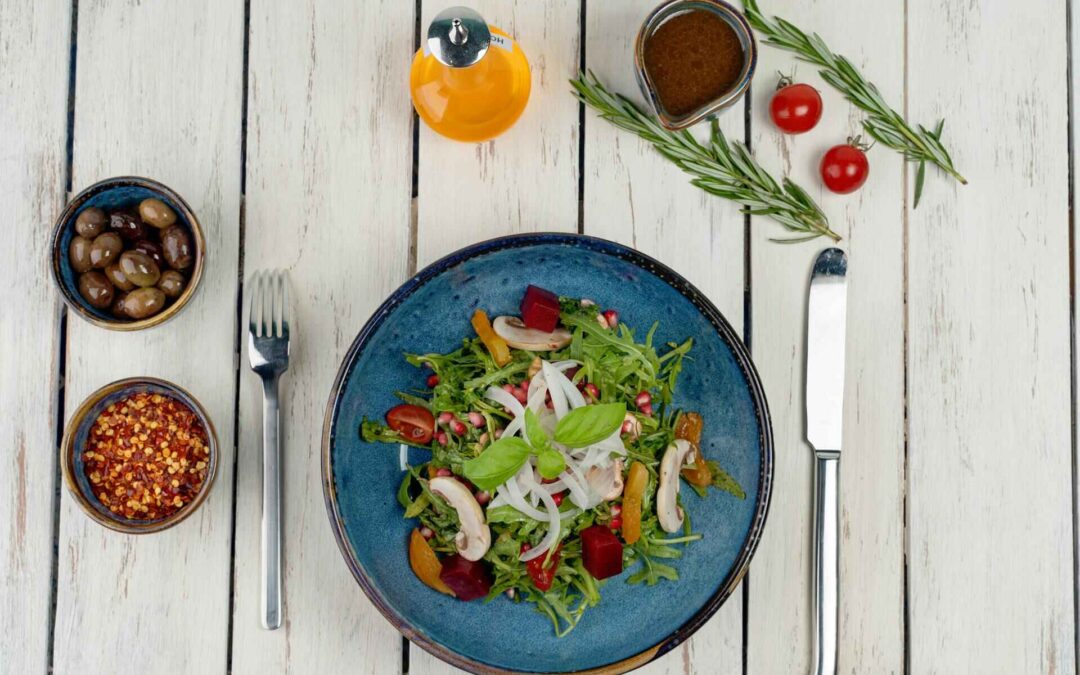Starting a low carb diet can feel like stepping into unfamiliar territory. With so much information out there, you might wonder, “Where do I begin?” Don’t worry! This guide on how to build a simple low carb meal plan for beginners breaks down the process step by step, providing you with the tools, tips, and food choices to create a sustainable and enjoyable low-carb journey.
Introduction to Low Carb Diets
For many beginners, a low carb diet is an approach to eating that focuses on reducing carbohydrate intake, prioritizing proteins, and increasing healthy fats. This style of eating can aid in weight loss, stabilize blood sugar levels, and improve energy. However, there are several myths surrounding low-carb diets, such as the misconception that they restrict all carbs or are too challenging for long-term success. A low-carb meal plan doesn’t have to be restrictive or overly complex—it’s about making balanced, conscious choices.
Key Points in a Low Carb Diet:
- Reduces carbohydrate intake by focusing on low-sugar, high-fiber vegetables and whole foods.
- Prioritizes healthy proteins and fats, keeping you fuller for longer.
- Emphasizes nutrient-dense foods while avoiding refined grains and sugars.
Basics of Low Carb Dieting
Understanding the balance of macronutrients—carbohydrates, proteins, and fats—is essential when creating a low-carb meal plan. Knowing your carb limit and selecting the right types of foods is key to sustainable weight management. (1)
Understanding Macronutrient Ratios
- Carbohydrates: Generally, for a low carb diet, aim for around 50-100 grams per day, depending on your health goals.
- Proteins: Choose high-quality proteins, such as eggs, poultry, and fish, which are essential for muscle maintenance.
- Fats: Healthy fats like avocados, olive oil, and nuts help provide energy and flavor.
Health Benefits of a Low Carb Meal Plan
A low carb meal plan offers several health benefits. While weight loss is often the primary goal, a low carb approach can support broader health improvements, especially for beginners looking for a sustainable lifestyle change. (2)
Benefits Include:
- Weight Loss: Reduced carb intake often leads to a decrease in body fat. (3)
- Stabilized Blood Sugar Levels: Helpful for managing blood sugar spikes, especially for those with insulin resistance. (4)
- Mental Clarity and Focus: Many report better mental focus due to the brain using fats as a primary energy source.
- Reduced Cravings: A low carb diet can help diminish cravings, making it easier to resist high-sugar, high-carb snacks.
Step-by-Step Guide to Building a Low Carb Meal Plan
Creating a low carb meal plan doesn’t have to be complicated. By following these straightforward steps, you’ll have a balanced, nutrient-dense low carb plan in place that’s both satisfying and sustainable. Whether you’re aiming for weight loss, more energy, or better blood sugar control, this guide on how to build a simple low carb meal plan for beginners will set you up for success.
Determine Your Daily Carb Limit
The first step in building a low carb meal plan is deciding how many grams of carbohydrates to consume daily. For most beginners, a range between 50-100 grams per day is effective for weight loss and health benefits, while others may aim for even lower (20-50 grams) for a ketogenic approach.
- Moderate Low Carb: 50-100 grams of carbs per day
- Very Low Carb (Keto): 20-50 grams of carbs per day
Consider using a macro calculator to find a target that aligns with your goals.
Choose High-Quality Protein Sources
Protein is essential on a low carb diet as it helps you feel full and supports muscle health. The amount you need depends on factors like age, activity level, and body goals, but a good general range is 1.2-2.0 grams per kilogram of body weight.
Great Protein Options for Low Carb Diets:
- Meats: Chicken, turkey, beef, pork
- Fish and Seafood: Salmon, shrimp, tuna, cod
- Eggs: A versatile, nutrient-dense choice
- Plant-Based: Tofu, tempeh, and some low-carb protein powders
Aim to include a source of protein in every meal. This can be as simple as adding a couple of eggs for breakfast or grilled chicken to a salad.
Incorporate Healthy Fats
Adding healthy fats is crucial for feeling satisfied and achieving the right balance in a low carb diet. Fats also provide essential fatty acids, which help with brain health and hormone balance. (5)
Healthy Fats to Include:
- Avocado: Rich in fiber and heart-healthy fats
- Olive Oil and Coconut Oil: Great for cooking and dressing salads
- Nuts and Seeds: Almonds, walnuts, chia seeds, flaxseeds
- Fatty Fish: Salmon, mackerel, sardines
Include a source of fat with each meal—think olive oil in a salad, avocado on the side, or a handful of nuts as a snack.
Include Non-Starchy Vegetables
Non-starchy vegetables are a low carb diet staple, providing fiber, vitamins, and minerals without spiking blood sugar. Focus on nutrient-dense options that add bulk to meals without adding many carbs.
Recommended Non-Starchy Vegetables:
- Leafy Greens: Spinach, kale, arugula
- Cruciferous Vegetables: Broccoli, cauliflower, Brussels sprouts
- Low-Starch Options: Zucchini, bell peppers, asparagus, cucumbers
Aim for at least 2-3 cups of non-starchy vegetables each day. These veggies can be eaten raw in salads, roasted as sides, or added to soups and stir-fries for variety.
Plan for Snacks and Beverages
Snacks can help keep hunger at bay, especially in the initial stages of a low carb diet. But not all snacks are created equal; choose options that are low in carbs but still nutrient-dense.
Smart Low Carb Snack Ideas:
- Hard-Boiled Eggs: High in protein and easy to prepare ahead
- Nuts and Seeds: Almonds, walnuts, or sunflower seeds (in moderate portions)
- Cheese or Greek Yogurt: Look for unsweetened, full-fat options
- Vegetable Sticks with Guacamole or Hummus: A satisfying snack packed with fiber and fats
For drinks, focus on water, unsweetened tea, or coffee. Avoid sugary beverages and be mindful of added ingredients in flavored drinks.
Organize Your Meals for the Week
Now that you have the basics covered, it’s time to put everything into a weekly structure. Planning meals reduces the chance of reaching for high-carb options and helps you stay on track.
Tips for Weekly Meal Planning:
- Plan Breakfast, Lunch, and Dinner: Make sure each meal includes a source of protein, fat, and veggies.
- Rotate Recipes: Keep things interesting by choosing a variety of dishes.
- Write a Grocery List: List out what you need and stick to it when shopping.
- Batch Cooking: Prepare larger portions of protein (like grilled chicken or hard-boiled eggs) that can be used throughout the week.
By planning meals, you can maintain consistency, avoid the need for last-minute high-carb fixes, and enjoy a greater variety in your diet.
Low Carb Food List for Beginners
Not sure what to eat on a low carb diet? Use this list to build your grocery list and simplify your choices.
Protein Sources:
- Meat (chicken, beef, pork)
- Fish and seafood
- Eggs
- Tofu and other plant-based proteins
Vegetables (Low-Starch):
- Leafy greens (spinach, kale, arugula)
- Cruciferous vegetables (broccoli, cauliflower)
- Zucchini, bell peppers, cucumbers
Fats and Oils:
Avocados, olives
Olive oil, coconut oil
Nuts and seeds
Snacks and Treats:
- Nuts (almonds, walnuts)
- Dark chocolate (look for low-sugar options)
- Greek yogurt (unsweetened)
Foods to Avoid on a Low Carb Diet
Avoiding certain foods is crucial for staying within your carb goals. Here’s a quick list of high-carb foods to skip:
- High-carb grains: Bread, pasta, rice
- Sugary Foods: Sweets, candies, sugary drinks
- Starchy Vegetables: Potatoes, corn
- Processed Foods: Hidden carbs in many packaged snacks
How to Meal Prep for a Low Carb Diet
Meal prepping for a low carb diet can be a game-changer, especially if you’re aiming to maintain consistency, save time, and avoid high-carb temptations. Whether you’re new to meal prepping or looking to streamline your routine, this guide will take you through the essentials of how to meal prep for a low carb diet so you can stay on track, enjoy diverse meals, and feel in control of your diet.
Why Meal Prep is Beneficial for a Low Carb Diet
Meal prepping offers several advantages that can make following a low carb diet easier and more sustainable:
- Reduces Decision Fatigue: With meals planned and prepped, you don’t have to worry about what to eat each day.
- Limits High-Carb Temptations: If you have a healthy low carb meal ready to go, you’re less likely to reach for high-carb snacks or meals.
- Saves Time: Cooking in bulk means fewer daily cooking sessions, which can free up hours during the week.
- Controls Portions: By pre-portioning meals, you can avoid overeating and stick to your carb and calorie goals.
Step-by-Step Guide to Low Carb Meal Prepping
Plan Your Weekly Meals
Start by deciding what meals you’d like to eat for the week. This plan should cover breakfast, lunch, dinner, and any snacks, focusing on low carb ingredients and balanced macronutrients. Choose recipes that fit your carb goal and provide variety so you don’t get bored.
Key Points for Planning:
- Select Balanced Recipes: Aim to include a protein, fat, and low carb veggie in each meal.
- Use Simple Recipes: Choose easy-to-make recipes that don’t require a lot of time or ingredients.
- Rotate Ingredients: Choose versatile ingredients (like grilled chicken, leafy greens, and cauliflower) that can be used in different meals to add variety without increasing prep time.
Make a Detailed Shopping List
Once you have your weekly meal plan, list out the ingredients needed. This list will help you stay focused when shopping, reducing impulse buys and ensuring you have everything on hand for the week.
Tips for an Effective Low Carb Shopping List:
- Stock Up on Staples: Include pantry items like olive oil, coconut oil, spices, and low carb condiments (like mustard or vinegar).
- Prioritize Fresh Produce: Look for non-starchy vegetables like spinach, broccoli, zucchini, and peppers.
- Choose High-Quality Proteins: Select lean meats, eggs, fish, and plant-based proteins (like tofu) that are easy to cook in bulk.
Batch Cook Protein Sources
Protein is a key part of any low carb meal plan, and cooking it in bulk saves time and adds flexibility. Grill or bake several portions of proteins such as chicken breasts, turkey, shrimp, or tofu, which you can add to salads, wraps, or stir-fries throughout the week.
How to Batch Cook Proteins:
- Oven-Baked Chicken: Season with salt, pepper, and herbs; bake at 375°F for 25-30 minutes.
- Ground Beef or Turkey: Sauté with garlic and onions for a versatile protein base.
- Hard-Boiled Eggs: Boil a dozen eggs at once for easy snacks or breakfast options.
Prepare Low Carb Vegetables
Vegetables are an essential part of a low carb diet, providing fiber, vitamins, and bulk to keep you full. Choose low-starch veggies that store well and can be used in different meals.
Vegetable Prep Tips:
Roast or Grill: Vegetables like broccoli, zucchini, cauliflower, and bell peppers can be roasted in large batches for easy sides.
Chop Raw Veggies: Slice cucumbers, peppers, and celery to have on hand for snacks or salads.
Use Spiralized Veggies: Zucchini or cucumber noodles make for quick low carb pasta alternatives.
Portion and Store Meals Properly
To make meal prepping effective, portion each meal into separate containers. This ensures that you have ready-to-go meals and helps with portion control.
Tips for Storing:
- Invest in Quality Containers: Use glass containers or BPA-free plastic containers to keep food fresh.
- Label Each Meal: Label containers with the meal type and date to easily keep track of your meals throughout the week.
- Separate Wet Ingredients: If you’re including sauces or dressings, store them in small containers to prevent sogginess.
Prepare Low Carb Snacks
Snacks can help you stay energized between meals. By preparing low carb snacks in advance, you’ll always have a quick, healthy option ready when hunger strikes.
Easy Low Carb Snack Ideas:
- Hard-Boiled Eggs: High in protein and portable.
- Nut Packs: Portion almonds, walnuts, or macadamia nuts into small servings.
- Vegetable Sticks with Hummus: Pair sliced cucumbers or celery with a few tablespoons of hummus.
- Cheese Cubes or Slices: Full-fat cheese is filling and makes a great snack.
Stay Organized and Stick to Your Plan
Meal prepping can be a time-saver, but it’s important to stay organized to make the process as efficient as possible.
Organizational Tips:
- Use a Calendar: Mark out meal themes or daily meals on a calendar so you know exactly what to eat each day.
- Keep Ingredients Visible: Store prepped foods and snacks at eye level in the fridge to easily find what you need.
- Track Your Meals: Use a food tracking app if you want to monitor carbs and calories and ensure you’re meeting your dietary goals.
Sample 7-Day Low Carb Meal Plan
A structured plan can help beginners stay consistent. Here’s a sample low carb meal plan for a week:
Day 1: Start Simple
- Breakfast: Scrambled eggs with spinach and feta
- Lunch: Chicken Caesar salad (skip croutons; use a light olive oil dressing)
- Dinner: Grilled salmon with asparagus and a side of mixed greens
- Snack: Handful of almonds or a piece of string cheese
Day 2: Fresh Flavors
- Breakfast: Greek yogurt with chia seeds, walnuts, and a few raspberries (look for unsweetened yogurt)
- Lunch: Turkey lettuce wraps with avocado slices, tomato, and a drizzle of olive oil
- Dinner: Beef stir-fry with bell peppers, zucchini, and a low-sodium soy sauce alternative
- Snack: Celery sticks with a tablespoon of almond butter
Day 3: Protein Power
- Breakfast: Omelet with mushrooms, bell peppers, and cheese
- Lunch: Shrimp and avocado salad with a lemon vinaigrette
- Dinner: Baked chicken breast with roasted Brussels sprouts and cauliflower mash
- Snack: Handful of olives and a few slices of cucumber
Day 4: Mediterranean Twist
- Breakfast: Greek yogurt with sliced almonds and a sprinkle of cinnamon
- Lunch: Spinach and kale salad topped with grilled chicken, cherry tomatoes, and feta
- Dinner: Lamb chops with a side of sautéed green beans and a small serving of roasted eggplant
- Snack: Hard-boiled egg or a small handful of walnuts
Day 5: Comfort Classics
- Breakfast: Chia seed pudding with unsweetened almond milk and a few blueberries
- Lunch: Tuna salad served on lettuce leaves with cucumber slices and avocado
- Dinner: Zucchini noodles with marinara sauce, grilled turkey meatballs, and a sprinkle of parmesan
- Snack: Cheese cubes with a few grape tomatoes
Day 6: Flavorful and Filling
- Breakfast: Smoothie with unsweetened almond milk, spinach, a small amount of frozen berries, and a scoop of protein powder
- Lunch: Egg salad on romaine lettuce with a side of sliced red bell peppers
- Dinner: Pork tenderloin with a side of sautéed mushrooms and roasted cauliflower
- Snack: A few slices of turkey or ham with a dill pickle
Day 7: Week’s End Variety
- Breakfast: Avocado and smoked salmon on a bed of arugula with a squeeze of lemon
- Lunch: Cobb salad (lettuce, bacon, egg, grilled chicken, cheese, avocado) with a light dressing
- Dinner: Baked cod with roasted cherry tomatoes, garlic, and a side of steamed broccoli
- Snack: A handful of macadamia nuts or pumpkin seeds
Tips to Make Low Carb Eating Sustainable
For many, sticking with a low carb meal plan is about embracing flexibility and variety:
- Experiment with low-carb recipes to prevent boredom.
- Learn to read food labels to avoid hidden carbs.
- Find substitutes like cauliflower rice or zucchini noodles.
Remember, sustainability comes from small changes and finding meals you love.
Tracking Your Progress and Adjusting Your Meal Plan
To stay on top of your low carb diet, consider tracking your intake and making adjustments as needed:
- Track Macros: Use apps to monitor carbs, proteins, and fats.
- Adjust as Needed: If you aren’t seeing results, slightly reduce carbs or increase protein.
- Stay Mindful: Watch for signs like low energy or stalled weight loss as indicators to change your plan.
Common Mistakes and How to Avoid Them
While learning how to build a simple low carb meal plan for beginners, steer clear of these common pitfalls:
- Overeating High-Calorie Foods: Nuts and oils are healthy but calorie-dense.
- Neglecting Nutrients: Include a variety of foods for fiber, vitamins, and minerals.
- Ignoring Portions: Stick to portion sizes to avoid overeating.
Frequently Asked Questions (FAQs)
What’s the ideal daily carb intake for beginners?
Around 50-100 grams of carbs per day.
Are low carb diets safe for long-term use?
Generally, yes, but consult with a health professional.
Can you eat fruits on a low carb diet?
Yes, but focus on low-sugar fruits like berries.
How long does it take to see results?
Many see changes in a few weeks, but it varies.
What should I do if I feel low on energy?
Try slightly increasing your carb intake or adding healthy fats.
The Bottom Line
Building a simple low carb meal plan for beginners doesn’t have to be overwhelming. By focusing on nutrient-dense foods, planning ahead, and avoiding common mistakes, you can create a sustainable approach to low carb eating that supports your health goals. Remember, the journey to better health is about progress, not perfection. Embrace each step, stay flexible, and discover the low carb foods and recipes that work best for you.







0 Comments